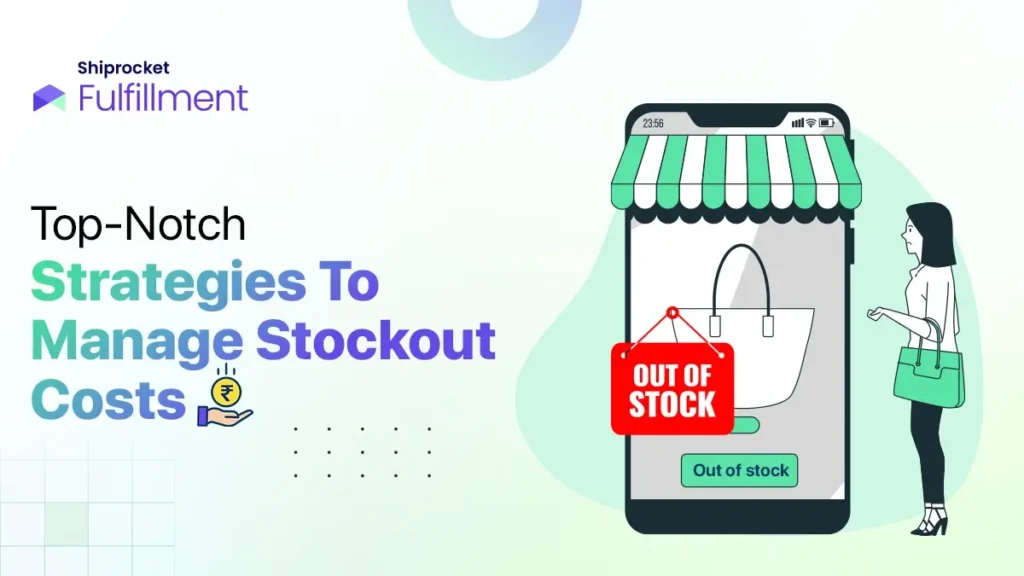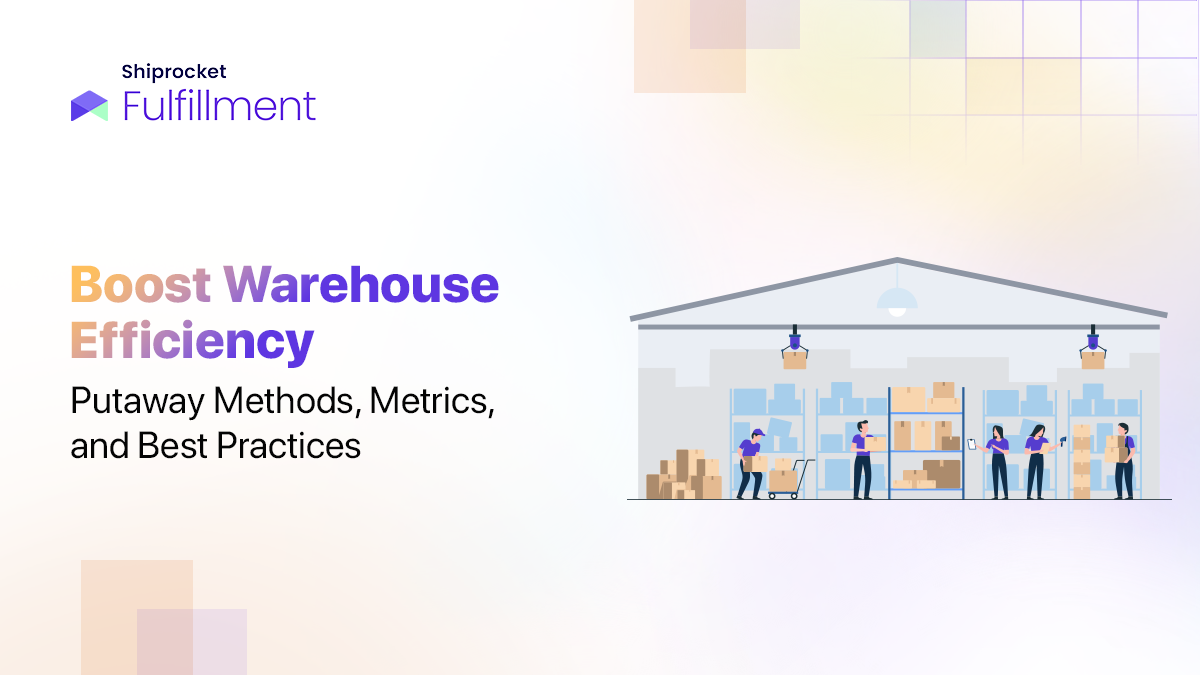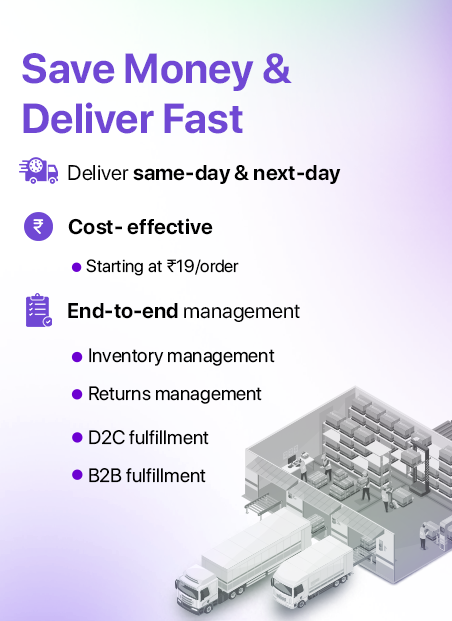Introduction
Stockouts define the inability of a business to fulfill a customer’s order due to insufficient inventory. This ‘no stock’ problem can significantly impact a business. According to Statistica, in the case of stockouts, 44% of consumers in 2021 bought the product from a different retailer, and 31% bought similar products from another brand/retailer. Only 10% waited for the product to be available again from the same retailer. Thus, the result of stockouts is abandoned purchases. Back in 2004-2005, an average 4% sales loss translated into an almost USD 40 million yearly loss for a retailer.
Companies should, therefore, follow a balanced stock level to prevent stockout costs and drive customer satisfaction. So, how can you overcome stockout costs? Follow these strategies and tips, turn around your inventory management and write your success story!

Understanding Stockout Costs
Businesses typically have direct and indirect expenses. Similarly, determining stockout costs involves:
- Direct Stockout Costs: Examples include loss of sales, reduced profit margins, higher supply chain costs, shopping costs, loss of productivity, and addressing customer complaints.
- Indirect Stockout Costs: Examples include excess inventory, storage costs, and replenishment order costs.
If these costs are not addressed, it can considerably impact your business.
The Impact of Stockout Costs on Your Business
Stockouts impact businesses at multiple levels. Here are the critical aspects:
- Loss of Sales Revenue: When a business does not have a product that a consumer orders, the outcome is a loss of sales. Customers will immediately buy from alternative retailers. In the long term, this will impact the revenues of the company.
- Impacts on Customer Relationships: Customers are frustrated when a business does not have a product in stock. When there are repeat instances, not only will they take it to social media or communities, but they will also buy from competitors. Another impact could be an increase in customer churn. This harms customer loyalty, resulting in damage to the reputation. It also blocks growth opportunities, as many customers may be unwilling to return to the brand.
- Increased Costs: Apart from the external impact, stockouts are expensive for a business. Often, the rush to replace stock promptly results in sourcing it at high costs. Rush fees, expedited shipping, and higher prices for materials from new suppliers will impact profit margins. Therefore, stockout costs will directly impact the business’s revenue stream and capability to generate profits.
Calculating Stockout Costs
Want to know how to calculate stockout costs? Read the steps below:
- Find Cost of Goods Sold: The first step is to find the COGS. It includes all the expenses incurred to produce and sell the product. All direct costs, like raw materials and labour, plus indirect costs, such as overheads, are added here.
- Find Cost of Lost Sales: The loss of sales is calculated by multiplying the average daily sales revenue by the number of days the product is out of stock.
For instance, if a product has an average sales rate of INR 10,000 per day, then being out of stock for 3 days will be the total cost of lost sales. In this case, the cost of lost sales will be INR 30,000.
- Add Additional Costs: The next step is to add other expenses like expedited shipping, lost productivity, and customer service costs.
- Find Total Stockout Costs: You can add these three determinants to arrive at the final costs.
Total Stockout Costs = Cost of Goods Sold + Cost of Lost Sales + Additional Costs
Thus, the value of the total stockout costs will give you invaluable insights to update your inventory planning strategies.
Minimising and Preventing Stockout Costs: 5 Strategies
As maintaining proper stock levels is always a challenge, here are five strategies we have shortlisted to help you minimise stockouts:
- Inventory Management Optimisation: Tracking inventory levels, reading market forces, and anticipating potential market growth will help you forecast product demand. This proactive approach will ensure stock availability at all times.
- Data-Driven Decision-Making: Analytic tools should be your go-to solution to overcome stockout issues immediately. You can use the data to gain insights and manage your inventory, preventing stockouts. Another solution is to partner with data analytic platforms to enable predictive analysis.
Several shipping and logistics providers, like Shiprocket, offer integrated data analytics solutions to help you with inventory, warehouse management, and shipping. These services protect you from stockout costs and maintain a worry-free supply chain process.
- Always Partner with Multiple Suppliers: You must establish relationships with more than one supplier. It ensures you are always in stock, as at least one of them will fulfill your order. At the same time, a supply chain analytics tool will manage multiple suppliers efficiently.
- Increase Inventory Accuracy: The bottom line is to reduce human error and avoid inventory discrepancies by monitoring stock levels. Regularly monitor and update stock levels to scan items and fulfill orders for inventory data.
- Have Safety Stock: It is essential to have Just-In-Time (JIT) stock to meet sudden demand surges. At the same time, ensure ‘carrying costs’ remain low. It is necessary to prevent unnecessarily high hold costs by carefully finding the ideal safety stock levels by using the calculator.
These five strategies help you protect your business from experiencing stockouts.
Protecting Your Business from Stockouts
Stockouts are one of the critical issues that every business needs to address, especially online retailers. While there are several proactive strategies to prevent stockouts, some routines and standards must be followed.
When a stockout happens, the availability status of the missing item should change across all sales channels. It prevents customers from making a purchase accidentally. Ideally, include a stockout notice along with the in-stock date. It will help customers to know more about availability and determine if they can wait or look for alternatives.
You can also consider moving out dead stock as an alternative strategy. You can liquidate them by bundling them with high-performing products. This helps you make space for products that sell out faster. Clearing out dead stock improves your inventory. One of the critical factors in stockout costs, carrying costs, can be decreased by liquidating dead stock.
Conclusion
Retailers need to find solutions that ensure they are unaffected by stockout costs. An ideal course of action is to implement either one or a combination of these five above-mentioned strategies. Using the right technologies and tools specific to your industry or niche will help you manage inventory.
AI-driven platforms manage stockouts to ensure automatic updates of stock counts across multiple sales channels. In addition to these strategies, retailers should also educate employees about the importance of stockout prevention and review stockout prevention strategies regularly to ensure that they are still effective. By taking these steps, retailers can minimise the risk of stockouts and effectively maintain their business pace.
To find the stockout rate, divide the uncompleted orders by the total number of orders given. For example, if you received 50 orders in a month and fulfilled 45 orders, the stockout rate would be 5%.
Yes, a low stockout level is the point at which the stock level is so low that the business runs the risk of having no products. Having a safety stock is a temporary solution.
A balanced stock level is achieved when inventory is not overstocked or understocked. Efficient and effective control over the flow of goods ensures balanced stock levels.





